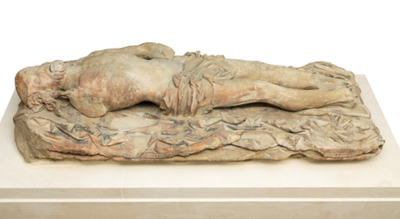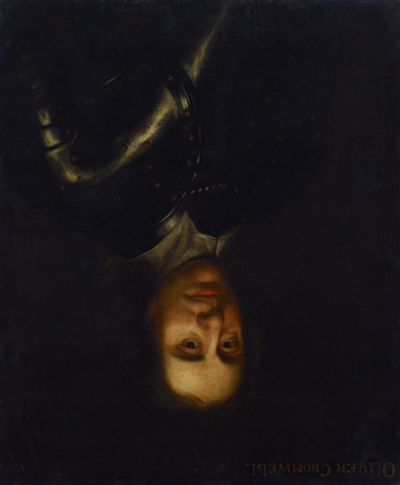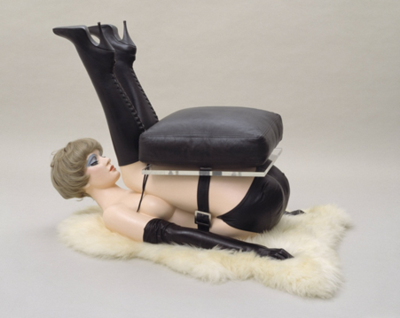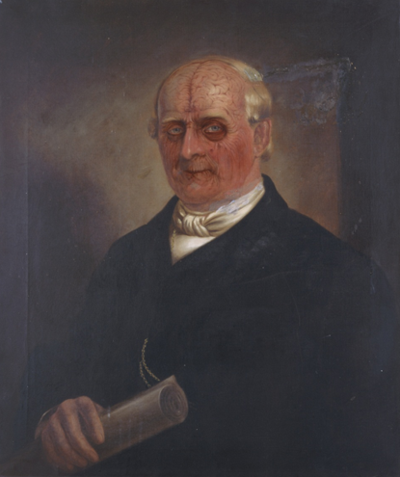Art under Attack
By THEA LENARDUZZI
Stepping off the chewing-gum-peppered pavements of
the City of London this morning, I found myself in a cool antechamber to the chapel
of the Worshipful Company
of Mercers. Having arrived early, I drifted between sombre
portraits of the grand old men of the Company’s history as I waited for others
to join me. The occasion was the unveiling of Tate Britain’s
next major exhibition, Art under Attack:
Histories of British iconoclasm (opening in October), which aims
to trace incidents of physical attack on our art from the 1500s to the present
day.
Once gathered, we
were invited to move beyond the table of breakfast pastries into the chapel
where “Statue of the Dead Christ” – one of the show’s central works, on loan to
the Tate from the Company (hence this morning’s venue) – lay in wait.

"Statue of the Dead Christ", c.1500-1520; Stone on limestone plinth; the Mercers’ Company
This delicately carved figure of Christ removed from the Cross, his features (and limbs, were
they still there) contorted by the early stages of rigor mortis, ribs and veins
seeming almost to pierce the surface, is a powerful historic reminder of this
country’s relationship with the visual arts. Dating between 1500 and 1520, the
statue fell prey to Protestant iconoclasts, who stripped bare monasteries
across the land as part of Henry VIII’s systematic drive for more money to keep
him in the style to which he had grown (the right word) accustomed.
This statue will
join others from the period – mostly limbless, with great gouges where books
were cleaved from the stone. These were not acts of opportunist vandalism;
those armed with the axes knew very well that sculpted books were lined with lead, a
material of greater value than any amount of stone.
The lead, found there
and elsewhere in the monasteries, was generally melted down on site to form
ingots – and for this great fires were required. How fortuitous, then, that
monasteries had libraries too – so many pages to burn. (In the press
conference which followed our preview, Tabitha Barber, one of the exhibition’s
curators, offered the startling if difficult-to-substantiate statistic that 90
per cent of pre-Reformation images have been lost, and all that remains is
mutilated: one poignant photograph taken in 1907 following an excavation at
Winchester Cathedral shows row upon row of disembodied heads and limbs.)
Alongside these
statues will be exhibited religious artworks and manuscripts (two fragments from the tomb of Thomas
Becket show how literally the 1538 Court Order to deface all images of the saint
were taken).
But, if we are
to cover 500 years of this stuff, we must trot on to the second phase of the
exhibition, which covers secular forms of iconoclasm. Public sculptures are
obvious targets. Such is the case of the statue of William III, erected on
College Green in Dublin in 1701, and bombed in 1836 (beheading him) and in 1928
(doing away with most of the rest). This exhibition is the first to give Billy
his head back.
There is, too, a
portrait of Oliver Cromwell, which will be hung upside down by the Tate, in
keeping with the wishes of Prince Frederick Duleep Singh (1868–1926) to turn it
into a statement of heart-pounding monarchist politics. (Another difference
between vandalism and iconoclasm, our hosts pointed out, is that images must
remain recognizable if their, let’s call them, alterations are to have any real
political value.)

British School, "Portrait of Oliver Cromwell" (hung upside down); © Inverness Museum and Art Gallery
Never ones to miss a party, the Suffragettes are represented here by two paintings from a
series of thirteen attacked in Manchester galleries – Edward Burne-Jones’s “Sibylla
Delphica”, 1898, and G. F. Watts’s “May Prinsep (Prayer)”, 1867 – and one from
the National Portrait Gallery – John Singer Sargent’s “Portrait of Henry James”, 1913.
There is also a toffee hammer from 1911 used in the attacks (yes, really) as
well as the surveillance photographs issued by the Police to all museum
wardens, identifying the usual suspects. In the 1960s, the feminists took up
the mantle, if not the toffee hammer – throwing paint-stripper on Allen Jones’s
“Chair” (1969) and melting his lady's acrylic face.

Allen Jones's "Chair", 1969; Tate © Allen Jones
A third phase of
the exhibition considers how the Destruction
in Art Symposium (DIAS), which took place in London in 1966, made of breaking
and breakages an aesthetic
in their own right. Work by Yoko
Ono and Michael Landy will be joined by Ralph Ortiz’s “Piano Destruction”, which protested
against daily obliterations at home and abroad (specifically, Vietnam). One of a
series of public “destruction events” undertaken by him, it
will be displayed along with the BBC’s original audio recording of axe meeting
piano – which should make for a relaxing experience.
A final glimpse of the exhibition comes
in the form of “One Day You Will No Longer Be Loved II” (2008): one of a series
of historic portraits commissioned by the great and good, playfully doctored by
Jake and Dinos Chapman – the message being something along the lines of
“Thought your grandeur would last? Well, your portrait’s been sold (to us). And
you’re dead.”

Jake and Dinos Chapman, "One Day You Will No Longer Be Loved II" (No.6), 2008 © Jake and Dinos; Chapman Photo: Todd-White Art Photography; Courtesy White Cube
I can’t help but think, looking
again at the Mercers’ private collection, what fun the brothers could have in here . . . .
Peter Stothard's Blog
- Peter Stothard's profile
- 30 followers



